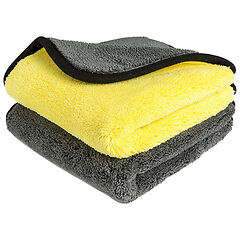
November 15th, 2021 by
Cold weather brings many inconveniences to motorists and one of the most annoying is when your car windscreen and windows fog up. It’s not only dangerous but illegal to drive with restricted visibility but it’s also frustrating to sit and wait for it to clear – especially if you’re running late. Therefore, it’s good to know a few tricks to clear it quickly. It’s even better if you can reduce or prevent its appearance in the first place! Read below and you’ll find a few handy tips to help you see clearly!
Why do car windows fog up?
Condensation on the windscreen occurs when warm, moist air from your body and breath inside the car hits the cold glass surface. On a very cold morning, your car will likely have been sitting there all night, so the temperature will be very low. When you hop in the car, all wrapped up and warm, the difference between the temperature of your breath and the windshield it’s hitting will be massive. This leads to a near-instant fogging effect! It’s the same as when your glasses steam up when you come inside from the cold, or when wearing a face mask and your warm breath is directed up onto the lenses.
Use your heater to demist the windscreen
Your best tool for clearing the fog is your heater but it’s not as simple as just blasting hot air upwards; there are a few tricks you can employ to clear it efficiently and let you get on your way.
Start on a low heat
 Cool air from the heater will still be warmer than the glass which is being cooled from the outside. Blasting it with hot, moist air will just compound the moisture problem. Put the blower on full but start the temperature low. You can gradually crank it up later if needed.
Cool air from the heater will still be warmer than the glass which is being cooled from the outside. Blasting it with hot, moist air will just compound the moisture problem. Put the blower on full but start the temperature low. You can gradually crank it up later if needed.
Use your air conditioning
If you have an air-con, turn it on as this will help to dry the air. However, don’t use recirculation as this will keep moisture trapped inside. Keep it on the “new air” setting that pulls air in from outside.
Open the window
Cold air from outside will help to release some of the moisture from inside the car.
Gradually increase the heat
You can gradually turn the heat up as the moisture dissipates.
Tricks to minimise fogging
As well as knowing how to get rid of steam, you can do a few things that will help to prevent it. Some you may know, but others are more leftfield!
Minimise moisture in the car
The more sources of moisture in the car, the more moisture will find its way into the air. Items like wet umbrellas, coats, and dog towels will all add to the problem so always remove them whenever you can and, if you can’t do that, store them in the boot.
Keep windows clean
Even if your window looks fairly clean, tiny dirt particles increase the surface area that water can cling to. This creates a thicker fogging effect that takes longer to remove. By removing as much dirt as you can from your windscreen and keeping the glass really clean you can minimise the formation of condensation.
Use a dehumidifier
Silica dehumidifier packs can be bought very inexpensively. Just leave this in your car overnight and it’ll absorb a lot of the ambient moisture inside the car, so your breath won’t have as dramatic an impact when you get in.
Use shaving foam
Believe it or not, the detergent in shaving foam stops water from beading and therefore condensing. Add a little to a cloth and wipe over the inside of the windscreen and windows and then buff with a clean cloth.
Pro-Kleen Super Thick Microfibre Cloth Twin Pack
Price: £11.99
Buy Now
Use cat litter
Yes, we know, this one is a little bizarre, but the job of cat litter is to absorb moisture, so it does have some scientific principle behind it! Scoop some cat litter into an old sock or small cloth bag and seal up. Leave it in the car overnight and it will take some of the moisture from the air. Remember to replace the litter periodically.
What not to do
Instinct can be to reach for cloth or sponge and just wipe the condensation away, but on cold days it’ll likely just fog up again quickly. It doesn’t change the temperature of the glass, after all. In addition, unless you have a clean microfibre cloth you run the risk of smearing the glass, making things even worse the next time it fogs up.
Comments
Leave a reply
Your e-mail address will not be published. All fields are required


